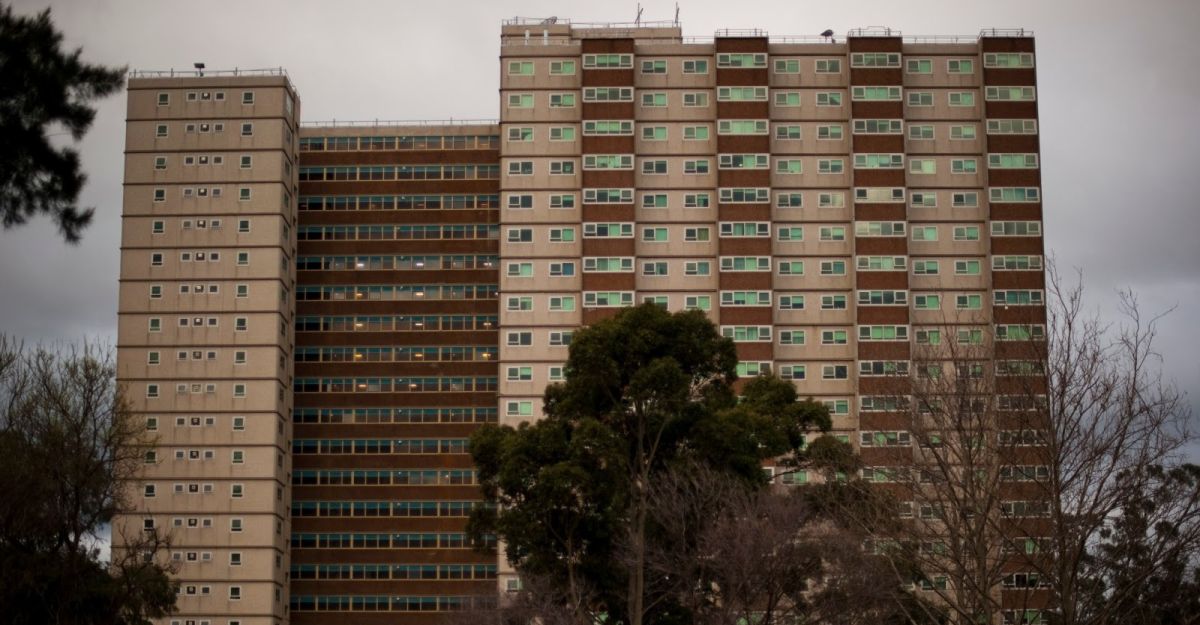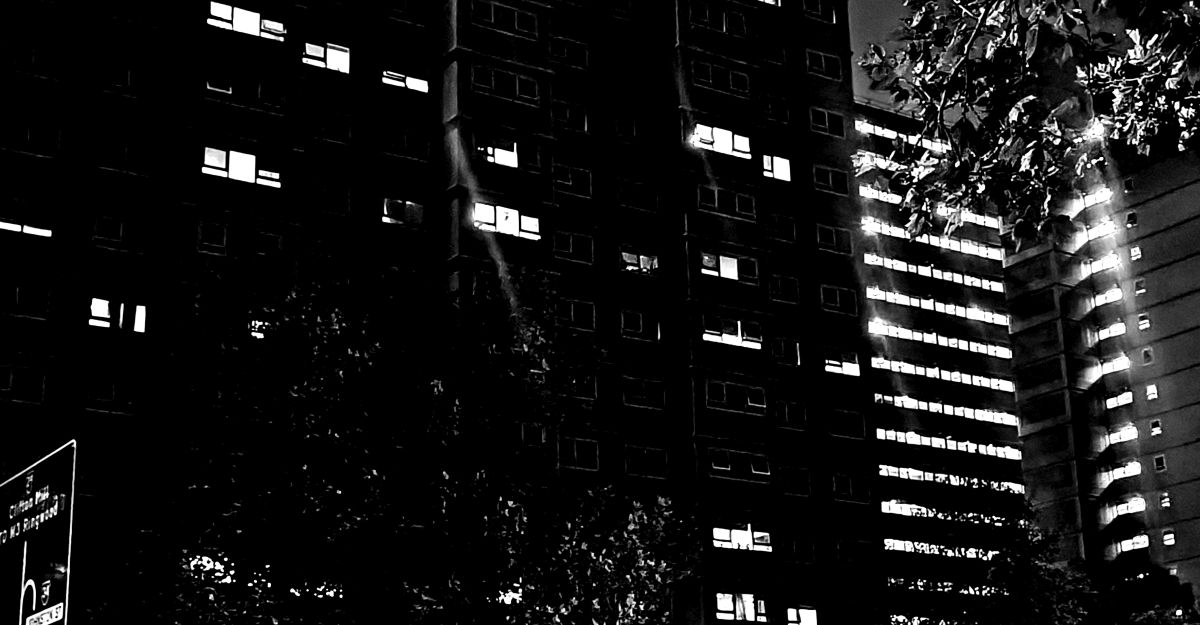Victorians must be weary of grim statistics about the housing crisis. As the state lurches from one dark milestone to the next, there is a real sense of drowning in ugly numbers. The wrong figures — social housing waiting lists, median house prices — grow monstrous, while the right ones — public housing stock, suburbs where the average wage could get you a home — become more and more emaciated.
There is a bipartisan consensus in Australian parliamentary politics when it comes to housing: the market will provide (with generous support from the taxpayer). The Victorian Labor government’s announcement last year that it would demolish and privatise much of the state’s remaining public housing exposed the extent of this consensus. This was shocking, but not surprising. Both major parties receive considerable donations from the property and construction industry. Australia’s parliament of landlords is happy to dance to developers’ tune.
There is no shortage of detailed and sophisticated reports critiquing both the housing crisis and the pro-market solutions proposed by the two major parties. What is lacking, however, is any real sense that ordinary people can do anything about the situation.
To this end, a little-known campaign from Melbourne’s inner north can prove instructive. Hands Off Melbourne’s Estates (HOME) played out over a frenzied four months in 2013. HOME not only united public housing residents, militant construction unions and the wider community around a set of socially progressive demands. It forced the then-Liberal Government to back down fully on its threats to privatise large parts of inner-city housing estates.
HOME’s organisation, unity, and tactics defeated ten years ago a less extreme version of what Jacinta Allan’s government is implementing today. It’s worth asking how it did so, and whether shifts in the political terrain over the past decade mean such victories are now out of reach.
“Grim Towers” get organised
The HOME campaign launched in January 2013 to oppose a proposal by the then-Liberal Party Baillieu Government. By today’s standards, Baillieu’s plan seems almost modest: in partnership with the private sector, thousands of private apartments would be built on public housing land in order to realise a new 50-50 private-public ratio. The entire project would be underwritten by shops and commercial office spaces, built to replace existing parks and playgrounds. The plan explicitly flagged the future demolition of the public housing estates.
The proposal mainly centred on two public housing estates: Atherton Gardens in Fitzroy and the large Richmond complex. Similar plans were also flagged for the Horace Petty estate in Prahran. The funding came partly from the then-Federal Labor Government’s Housing Affordability Fund, which required successful grant applications to be “market-ready.” The Age crowed that these “grim towers” were about to become “property gold.”
The Liberal Government, however, had dramatically underestimated the unique level of political organisation in the area. On the Fitzroy estate, residents were organised in the raucous and militant Atherton Gardens Resident Association (AGRA). AGRA cut across the ethnic divisions that could sometimes plague organising on the estates, and it consistently got results. Rather than simply putting up with maintenance neglect from the Department of Human Services, for example, AGRA had a strategy of occupying or picketing the DHS offices across the street until the department acted on their demands.
City of Yarra, where both estates are located, is also unique in that it has had longstanding socialist representation on the council. Councillor Stephen Jolly — a construction worker member of the CFMEU — had used his position since 2004 as a megaphone to amplify the demands of militant residents groups like AGRA. Jolly reflected recently that
while education and agitation isn’t rare in the 21st century, effectively organising and mobilising people is, and AGRA could do that. It had deep roots in the community and, like the Victorian CFMEU, could get its people on the streets in hours.
Jolly and his socialist group helped magnify AGRA’s opposition to Baillieu’s plan, and drew in a wider layer of residents from outside the estates. A campaign of petitions, letterboxing, and street stalls began, leading to mass public meetings and rallies held on the estates but open to all residents in the community. The organising frenzy in Fitzroy helped generate momentum on the less organised Richmond estate. With thousands of public and private housing residents eventually involved, the campaign determined to bring everyone together in an Atherton Gardens rally at the end of March to demonstrate the scale of the opposition to the government’s plans.
A few days before the rally, HOME representatives organised a meeting at Melbourne’s Trades Hall to ask for the support of the building industry group of unions (the CFMEU, ETU, AMWU and Plumbers union). After some discussion, the union group expressed in principle opposition to the destruction of public housing open space, particularly if new development — translating into jobs for their members — could take place on nearby empty state government land.
The HOME campaign publicised the successful negotiation, with immediate effect. The same day, the Baillieu government announced the indefinite postponement of its plans for Fitzroy and Richmond.
“Ill-informed scaremongering”
Then-Housing Minister Wendy Lovell blamed “ill-informed scaremongering” for the surrender. Tellingly, she declared the government would continue with its plan for the Prahran housing estate — the only one that lacked any level of serious political organisation.
The Liberal Government instantly set about trying to crush AGRA. In April 2013 — just days after the HOME victory — it swiftly banned all political meetings and protests on public housing estates. While it justified the bans to residents on the basis of the presence of outsiders “intruding” on the estates, their clear target was AGRA’s militancy.
During this draconian crackdown, security guards would follow residents around Atherton Gardens if they thought they were engaging in political activity. The Human Rights Law Centre, which formally represented Atherton Gardens residents opposing the bans, noted that
these policies are so broad they prevent residents from holding a rally on a common area of an estate to advocate on public housing repairs, waiting lists, safety issues or other political issues.
The most egregious aspects of the new rules were lifted in June 2013 following legal pressure and outright defiance.
No fear of the Housing Department
There can be no doubt that the involvement of the construction unions was key to AGRA beating back the government. Baillieu and Lovell balked because they faced not only a militant resident association that had proven it would not go quietly, but a solidaristic, disciplined set of unions that could completely halt work on any commercial construction they wished.
There were serendipitous elements in the wider political landscape that proved helpful. The Liberals held a very slim majority in the Victorian Parliament, were about to launch the East-West Link in May, and thought deploying the police against residents (and potentially unions) on two rambunctious fronts was too much. Victorian Labor was also out of government at the time. Despite former Housing Minister Richard Wynne having secured funding for and spruiking an earlier version of Baillieu’s housing plan in 2010, he could feign outrage about it while in opposition. The Greens Adam Bandt, still then in his first term as the Federal MP for the area, was facing a brutal re-election competition in September, and threw his weight behind the campaign. As Stephen Jolly put it to me,
AGRA skillfully played off the ALP at a state level, the Greens who had the federal seat, and the socialists who had the council position and could mobilise in the area. With this strength, AGRA had no fear of the housing department and could win these important victories for public housing tenants.
A new landscape
The political landscape is undoubtedly different today. Labor returned to Victorian state power in 2014 and resumed its previous governmental neglect of the estates and confrontation with AGRA, which eventually collapsed as an organisation. During the pandemic it implemented a “hard lockdown” at gunpoint on the inner-city public housing estates that made the Liberals’ meeting ban look positively kind. More broadly, from 2014 Labor continued where the Liberals left off in privatising large swathes of Melbourne’s inner city public housing. Indeed, Premier Jacinta Allan’s most recent housing plan proves Victorian Labor is prepared to go far further in the destruction of public housing than the Liberals were in government.
Another key aspect of the campaign has also changed. The most militant of the building industry group of unions, the CFMEU, has found itself under sustained attack from all quarters on the ostensible basis of criminal allegations. The fact that Jacinta Allan has proposed terminating CFMEU entreprise agreements perhaps suggests that these moves are more about reducing the cost of the Big Build and increasing construction industry profits than reducing criminal activity. Whatever the truth of the allegations surrounding the CFMEU, the demise of the construction division has been a longstanding goal of the entire political establishment. This is precisely because it can actually enforce its industrial and social demands with mass action. A tragic aspect of the situation is that if the CFMEU had been more active in its political support for socially progressive causes like the HOME campaign, it would have been far more difficult for governments and business to paint it as a mere mafia organisation.
Are current governments unbeatable?
HOME was a very brief moment where all the moving parts were in sync, guided by a clear strategy and vision. While this is not replicable in its entirety today, there are some key lessons that must be learned if ordinary people are to actually win results, and not just protest bad decisions by governments.
The first is that governments which get their funding from property developers cannot be trusted to address the housing situation in good faith. In 2013 Labor decried any demolition of the housing estates, and Liberal Housing Minister Wendy Lovell assured residents that such a move was not on the cards. This was despite Labor itself having already funded such a possibility, and the Liberals’ own briefings explicitly flagging it. Funded by big business, but reliant on the votes of its victims, the major parties are experts at speaking out of both sides of their mouth.
The second, and harder lesson, is that no number of professional reports will convince governments to surrender on a project that promises huge financial rewards to its backers. Only organising gets results. This is true on a local scale, as with the extremely militant AGRA, and on a national scale in the case of the building industry group of unions. Both groups spent years developing the politics, trust and discipline necessary to convince the establishment that they have the will and mass support to actually enforce their demands.
The HOME campaign shows that no government is unbeatable. But however bleak the political terrain, there are no shortcuts. If public housing is to be saved, it is only through political organisation and a degree of confrontation.



